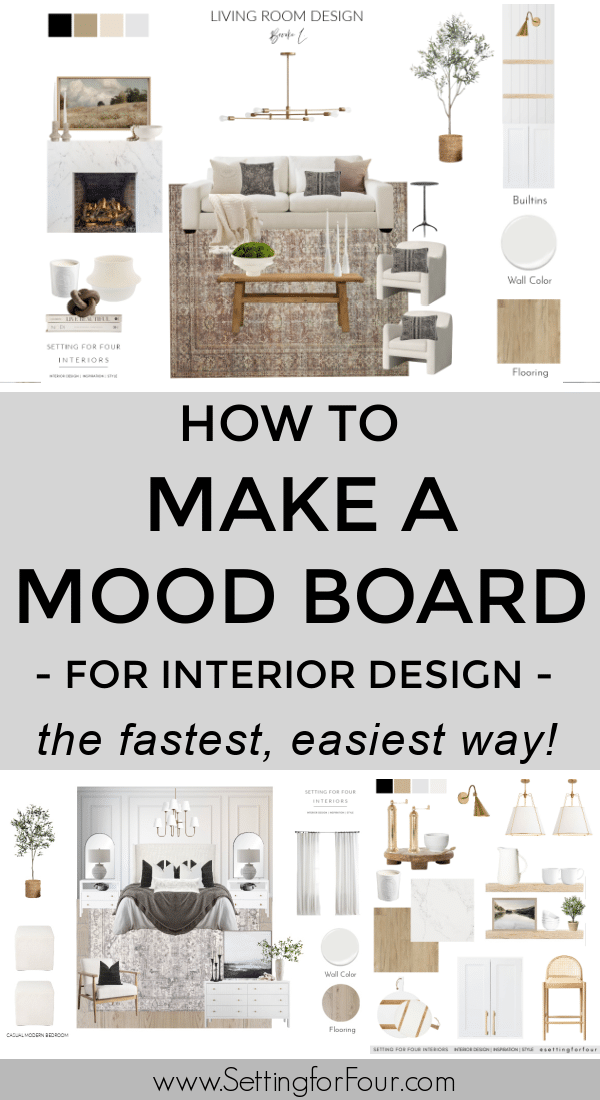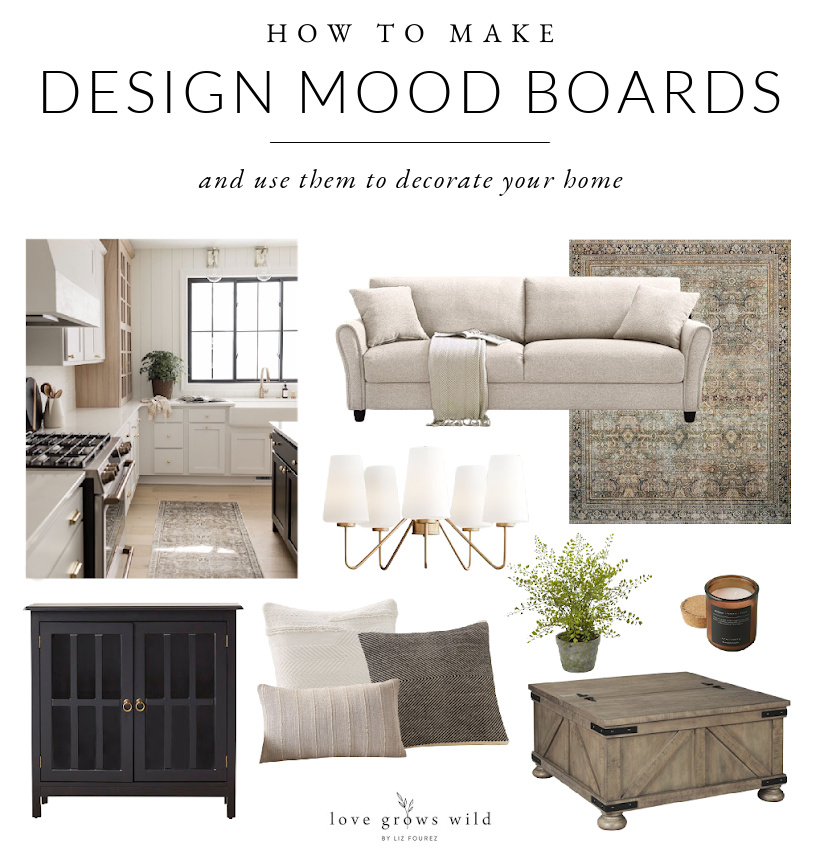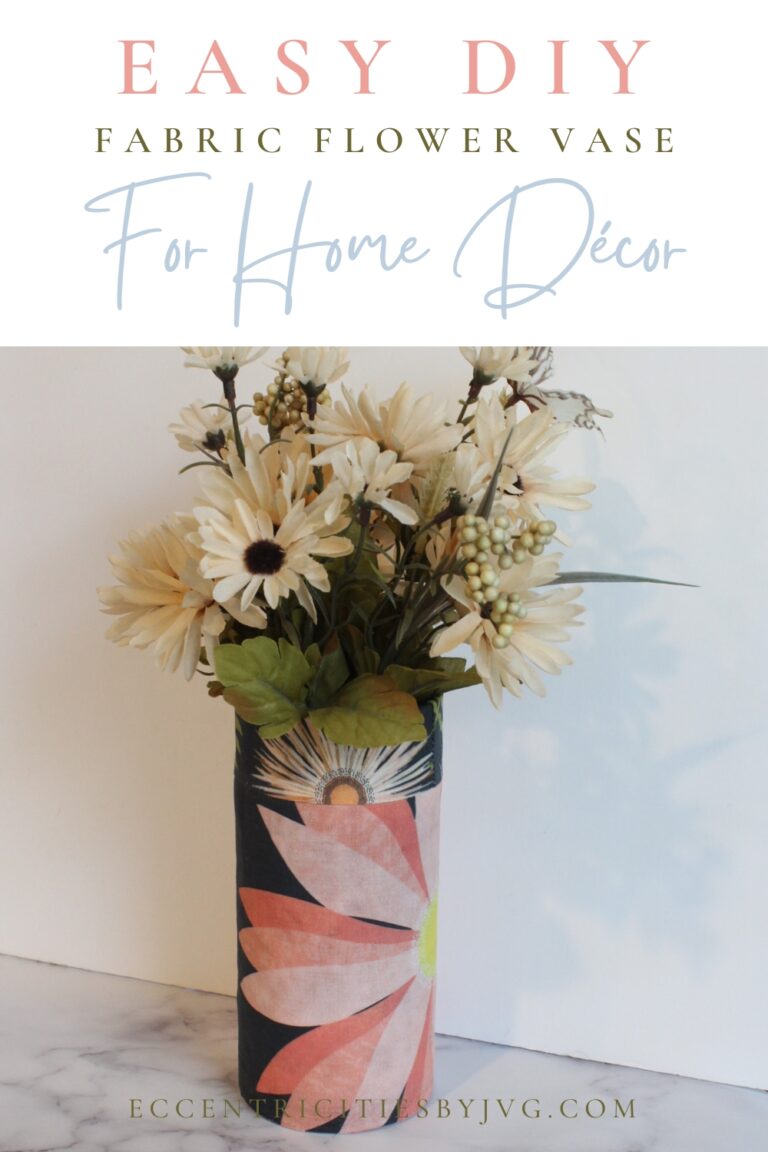How to Make a Mood Board for Home Decor: Creative Tips & Ideas
Creating a mood board for home decor can be a fun project. It helps visualize your design ideas and inspirations.
Are you ready to transform your living space? A mood board is a powerful tool to bring your dream home decor to life. This creative collage showcases colors, patterns, and textures that reflect your style. By gathering images and materials that inspire you, a mood board provides a clear direction for your decorating plans.
Whether you are redecorating a single room or your entire home, this guide will help you create a mood board that captures your vision and makes your design process smoother. Let’s dive in and start crafting your perfect home decor mood board!

Credit: www.settingforfour.com
Introduction To Mood Boards
Creating a mood board is a fantastic way to plan your home decor. It helps to visualize your ideas, colors, and styles before making any decisions. A mood board can save time, money, and effort by providing a clear direction for your design project.
Purpose And Benefits
A mood board serves several purposes in home decor planning. It helps to:
- Visualize the overall look and feel of a room.
- Combine various design elements cohesively.
- Communicate ideas to others, like family or designers.
Benefits of using a mood board include:
- Ensuring consistency in style and color.
- Helping to avoid costly mistakes.
- Simplifying the decision-making process.
Inspiration Sources
Finding inspiration for your mood board can come from many sources. Here are some ideas:
- Magazines: Browse home decor magazines for trendy ideas.
- Online Platforms: Use websites like Pinterest and Instagram.
- Nature: Look at colors and patterns found in nature.
- Art: Art pieces can inspire color schemes and styles.
- Travel: Use photos from your travels for unique ideas.
Collect images, fabrics, paint swatches, and other materials that resonate with you. Arrange them on a board to see how they work together. This helps create a cohesive look that reflects your personal style.
Gathering Materials
Creating a mood board for home decor starts with gathering the right materials. This step sets the foundation for your project and ensures you have everything you need to bring your vision to life. Below, we will dive into the essential materials you will need, including tips on choosing a base and collecting images and samples.
Choosing A Base
The base of your mood board acts as the canvas for your ideas. You can use a physical board, such as a corkboard or foam board. A virtual option like Pinterest or Canva works too. Each type has its advantages:
- Corkboard: Allows for easy pinning and rearranging.
- Foam Board: Sturdy and can be cut to any size.
- Digital: Easy to share and edit.
Choose a base that fits your style and workflow. A physical board adds a tactile element, while digital boards offer flexibility.
Collecting Images And Samples
Images and samples bring your mood board to life. Start by collecting photos, fabric swatches, paint chips, and other materials that inspire you. Sources for these items can include:
- Home decor magazines
- Online platforms like Pinterest and Instagram
- Local home improvement stores
- Personal photos and mementos
When selecting images, focus on colors, textures, and styles that resonate with your vision. Use a mix of photos and physical samples to create a balanced board. This approach helps visualize how different elements will look together.
Organize your materials by theme or room. For example, create separate sections for the living room, bedroom, and kitchen. This method keeps your board organized and easy to navigate.
Label each section clearly to avoid confusion. Use markers, stickers, or text boxes if you are using a digital platform. Keeping everything well-labeled ensures a smooth and enjoyable decorating process.
Defining Your Style
Creating a mood board for home decor begins with defining your style. Understanding your personal taste can guide you in choosing the right colors, textures, and furniture. This foundation will help you create a cohesive and appealing space.
Identifying Preferences
Start by identifying your preferences. Think about the colors, patterns, and materials you love. Reflect on your favorite spaces and why you enjoy them. Are you drawn to minimalist designs or do you prefer a more eclectic look?
- Colors: Choose hues that make you feel happy and comfortable.
- Patterns: Decide if you like geometric shapes, florals, or stripes.
- Materials: Consider whether you prefer wood, metal, or glass.
Explore different styles online or in magazines. Save images that resonate with you. This will help you recognize patterns in your preferences.
Creating A Style Profile
Once you’ve identified your preferences, create a style profile. This profile will serve as a guide for your mood board. Use a table to organize your thoughts:
| Element | Preference |
|---|---|
| Colors | Neutral tones, pastels, bold colors |
| Patterns | Stripes, polka dots, chevron |
| Materials | Wood, metal, glass |
In your style profile, include images, swatches, and notes. These elements will help you visualize your ideal home decor. Use this profile as a reference while creating your mood board.
Remember, your style is unique. Embrace what you love and make it your own.

Credit: www.youtube.com
Choosing A Color Palette
Creating a mood board is a fun way to plan your home decor. One of the first steps is choosing a color palette. The colors you select will set the tone for your space. Here’s how to choose the right colors for your mood board.
Color Theory Basics
Understanding color theory can help you pick the best colors. Colors are often categorized into three groups:
- Primary colors: Red, blue, and yellow. These colors cannot be mixed from other colors.
- Secondary colors: Green, orange, and purple. These are created by mixing primary colors.
- Tertiary colors: These are made by mixing primary and secondary colors.
Colors also have different tones:
- Warm colors: Red, orange, and yellow. They create a cozy, inviting feeling.
- Cool colors: Blue, green, and purple. They give a calm and soothing vibe.
Coordinating Colors
Choose colors that work well together. Here are a few tips:
- Monochromatic scheme: Use different shades of the same color. This creates a harmonious look.
- Analogous scheme: Select colors next to each other on the color wheel. These colors blend well.
- Complementary scheme: Pick colors opposite each other on the color wheel. This creates a bold contrast.
Use these schemes to ensure your colors coordinate well. This helps create a balanced and appealing mood board.
Remember to keep it simple. Too many colors can make your board look cluttered. Stick to a few key colors to maintain a cohesive look.
Incorporating Textures
Incorporating textures into your mood board can elevate your home decor project. Textures add depth and interest, making your design feel more dynamic. They help create a cozy, inviting atmosphere. Let’s explore how to add textures effectively.
Adding Fabric Swatches
Fabric swatches are a great way to introduce texture. Collect samples of different materials. Think about velvet, linen, and cotton. Each fabric brings a unique feel. Pin these swatches to your board. Notice how they complement your color scheme.
Consider the function of each room. For a living room, you might choose soft, plush fabrics. For a kitchen, durable and easy-to-clean materials work best. Mix and match textures to find the perfect balance.
Using Natural Elements
Natural elements bring warmth and authenticity to your decor. Think about incorporating wood, stone, or plants. These elements add a tactile dimension. Collect small samples or photos to include on your board.
Wood can be used in furniture or flooring. Stone might be perfect for countertops or accents. Plants bring a refreshing, organic touch. These natural textures can make your space feel grounded and serene.
Play around with different combinations. See how they interact with other textures on your board. This helps you create a harmonious and inviting home.

Credit: www.greenhousestudio.co
Including Furniture And Decor
Creating a mood board for home decor is a fun and creative process. Including furniture and decor is crucial to bring your vision to life. Furniture and decor set the tone and style for your space. They help you visualize how everything will come together. Let’s dive into the details of selecting key pieces and balancing proportions.
Selecting Key Pieces
Start by choosing a few key furniture items. These might include a sofa, bed, or dining table. Select pieces that align with your desired style. Think about colors, materials, and textures. Do you prefer wood or metal? Leather or fabric?
Next, add decor items. These could be rugs, lamps, or art pieces. Choose items that complement your furniture. They should enhance the overall look. Consider the shapes and sizes of these pieces.
Don’t overcrowd your mood board. Focus on a few standout items. Quality over quantity is essential. This helps maintain a clear vision.
Balancing Proportions
Balance is key in any design. Ensure your furniture and decor have the right proportions. Large furniture items should be balanced with smaller decor pieces. This creates harmony in your space.
Use a mix of shapes and sizes. A large sofa can be paired with a small coffee table. A tall lamp can balance a low seating area. Play with different heights and widths.
Consider the room’s layout. Think about how each piece will fit. Make sure everything has enough space. Avoid overcrowding or leaving too much empty space. A balanced mood board leads to a balanced room.
Arranging Your Mood Board
Arranging your mood board is a crucial step in home decor planning. It helps you visualize your ideas and brings your vision to life. A well-arranged mood board can make your design process smoother and more enjoyable. Let’s explore some techniques to arrange your mood board effectively.
Layout Techniques
Choose a layout that suits your style. Symmetrical layouts provide a balanced look. They create a sense of order. Asymmetrical layouts, on the other hand, add a dynamic feel. They can make your board more interesting. Experiment with both to find what works best for you.
Use a grid system for a clean and organized look. Divide your board into sections. Place different elements in each section. This makes it easy to see all parts of your design. It also helps you keep everything in order.
Creating Visual Flow
Arrange your images and materials in a way that guides the eye. Start with a focal point. This could be a key piece of furniture or an inspirational image. Place it in a central or prominent position.
Next, add complementary elements around your focal point. Use colors, textures, and patterns that match your theme. Make sure the elements flow naturally from one to the next. Avoid placing contrasting items next to each other.
Create balance by spreading out visual weight. If one side of the board feels heavy, add lighter elements to the other side. This helps create a cohesive and pleasing design.
Finally, step back and review your mood board. Make adjustments as needed. Ensure everything works together and reflects your vision. A well-arranged mood board will inspire your home decor journey.
Finalizing And Displaying
Creating a mood board for your home decor is exciting. The final step is to review, edit, and display your board. This ensures your vision is clear and ready to inspire your decor journey.
Review And Edit
Start by reviewing your mood board. Look at each element carefully. Ensure it aligns with your vision. Ask yourself:
- Does it reflect the style you want?
- Are the colors harmonious?
- Do the textures and patterns work well together?
Editing is crucial. Remove any elements that don’t fit. Add new ones if needed. Adjust the layout to make it visually appealing. Use these tips:
- Simplify: Keep only what truly inspires you.
- Balance: Ensure a mix of colors and textures.
- Consistency: Stick to a theme or style.
This process will refine your board. It will make your vision clear and cohesive.
Showcasing Your Board
Displaying your mood board is important. It keeps you inspired and focused. Here are some ways to showcase your board:
| Method | Description |
|---|---|
| Digital Display | Use a digital frame or screen saver. Keep your board visible on your computer or tablet. |
| Print and Frame | Print your mood board and frame it. Hang it in your workspace or living area. |
| Cork Board | Pin your elements on a cork board. This allows for easy updates and changes. |
Choose a method that suits your space and style. A visible mood board keeps you on track. It reminds you of your decor goals every day.
Conclusion
Creating a mood board for home decor is fun and rewarding. It helps you visualize your space before making changes. Gather images, colors, and textures that inspire you. Arrange them until you find a look you love. This process saves time and avoids costly mistakes.
Share your mood board with family or friends for feedback. Enjoy the process, and let your creativity shine. Happy decorating!






